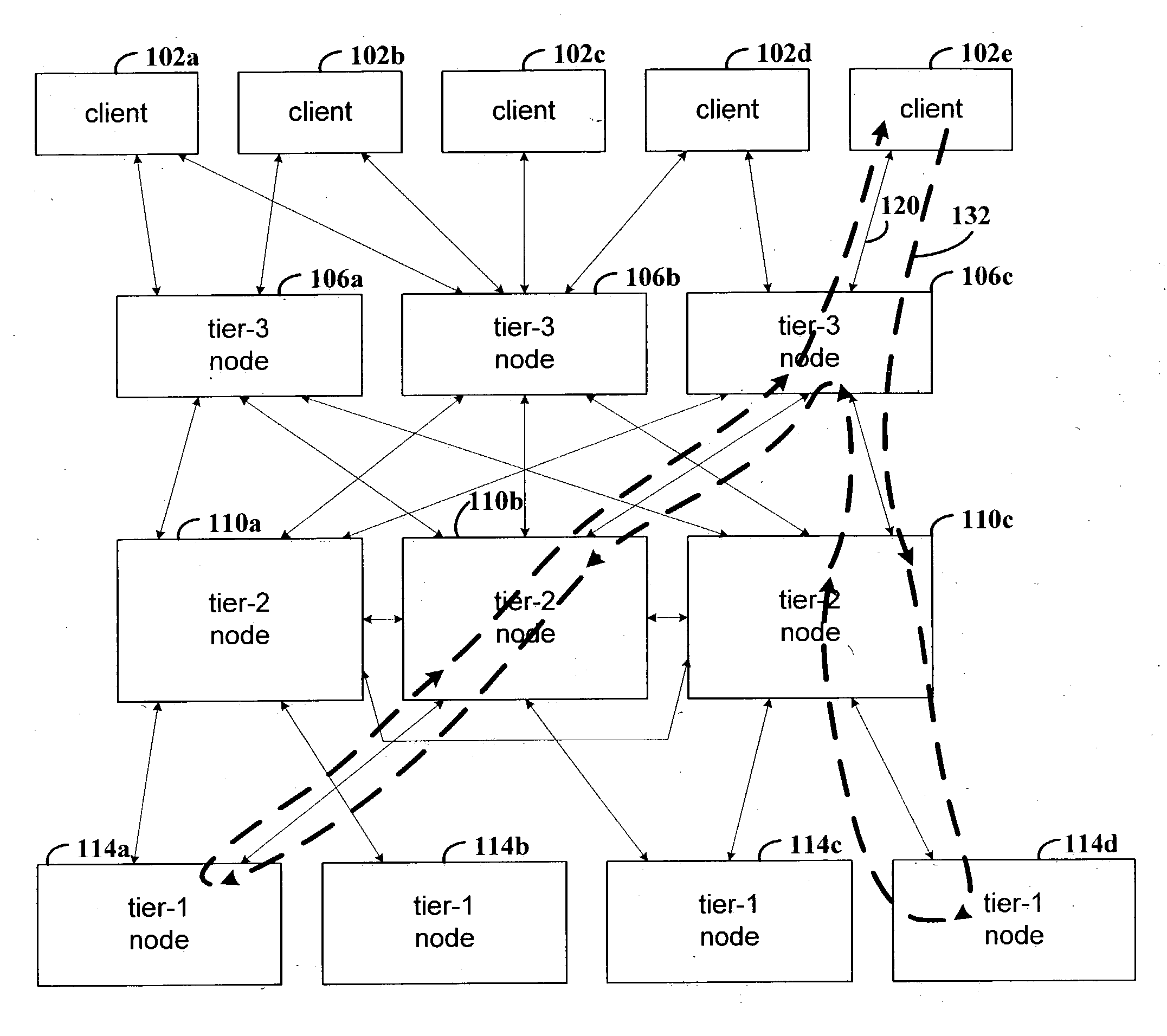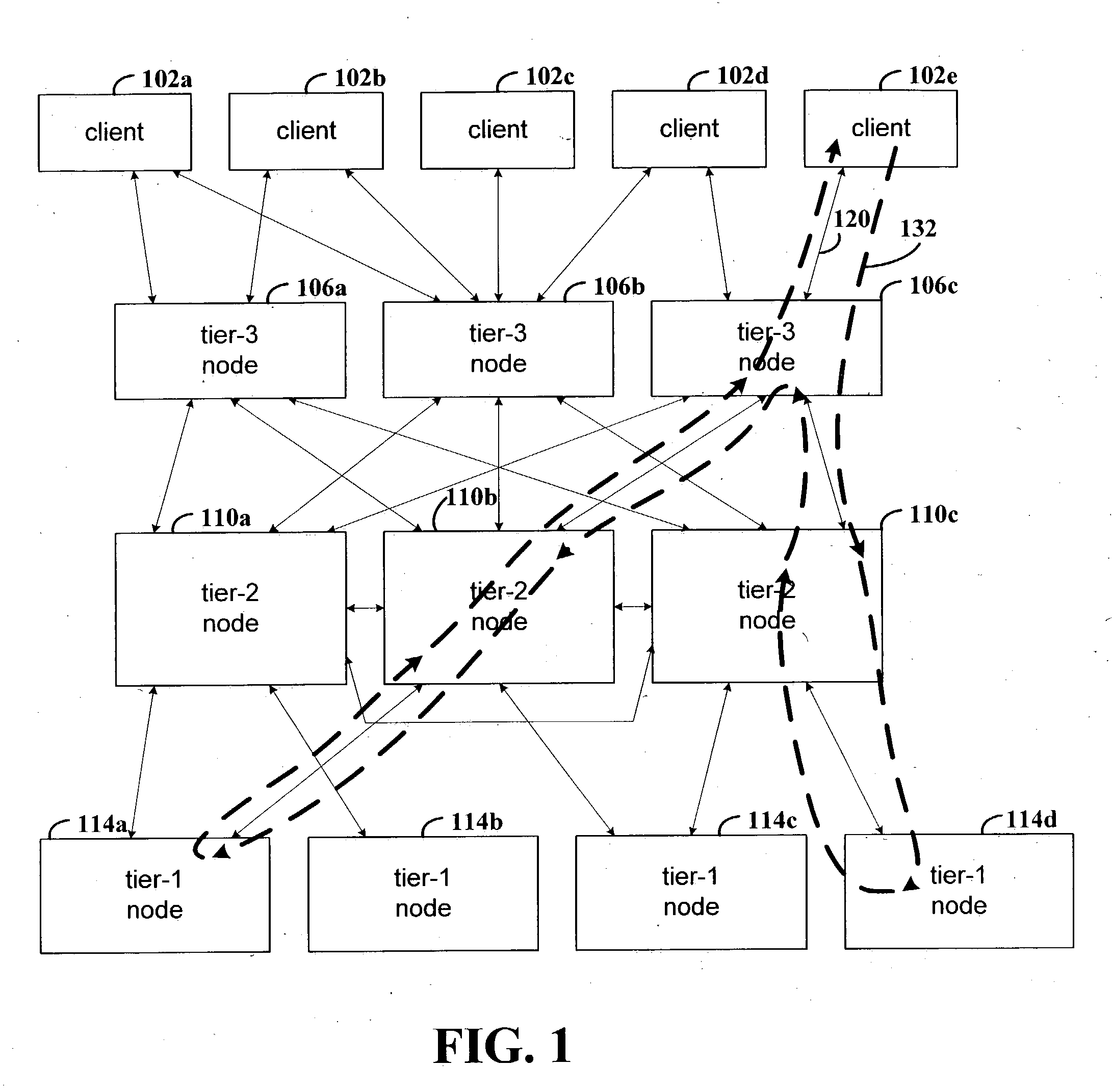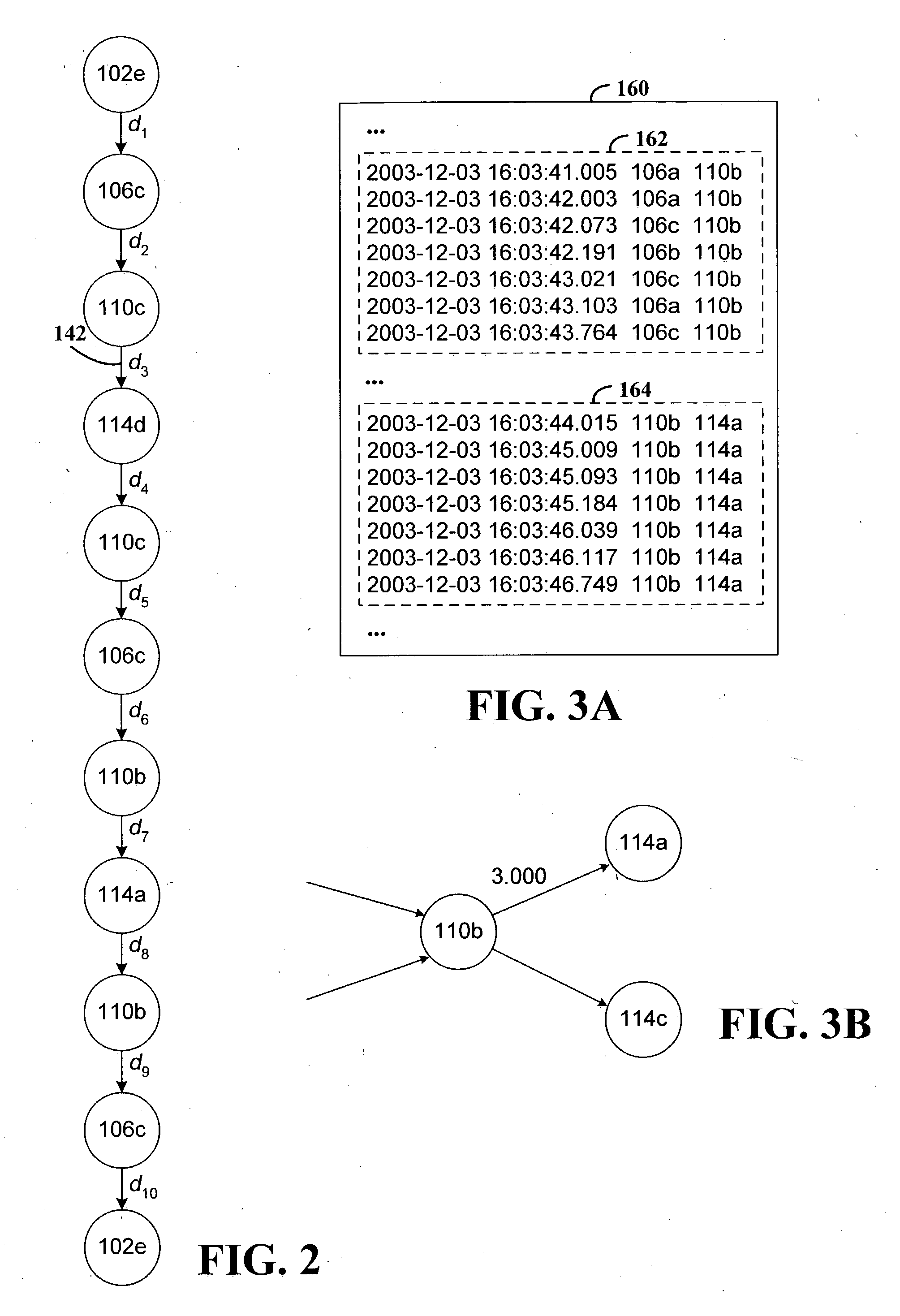Analysis of causal relations between intercommunicating nodes
a causal relationship and intercommunicating node technology, applied in the field of analyzing the relationships between messages sent, can solve the problems of difficult debugging of distributed systems, difficult diagnosis of performance issues in distributed systems, and different components' source cod
- Summary
- Abstract
- Description
- Claims
- Application Information
AI Technical Summary
Benefits of technology
Problems solved by technology
Method used
Image
Examples
Embodiment Construction
The various embodiments described herein infer causal relations of messages sent between nodes, where the causal relations may assist in locating performance problems. The nodes may represent host computer systems in a distributed data processing arrangement, computer processes, threads, active objects, disk drives or various combinations thereof. The inner functions of the constituent nodes need not be apparent to infer the causal relations. The nodes and communication relationships may be represented as a graph, with vertices in the graph representing the nodes and edges between the vertices representing communications between the nodes.
The causal relations may be inferred from traced communication information. The nodes may be determined from the traced communication information and may be represented as vertices in a graph. An edge may be added to the graph to connect two vertices that represent nodes that communicate, as indicated by the traced communication information. A c...
PUM
 Login to View More
Login to View More Abstract
Description
Claims
Application Information
 Login to View More
Login to View More - R&D
- Intellectual Property
- Life Sciences
- Materials
- Tech Scout
- Unparalleled Data Quality
- Higher Quality Content
- 60% Fewer Hallucinations
Browse by: Latest US Patents, China's latest patents, Technical Efficacy Thesaurus, Application Domain, Technology Topic, Popular Technical Reports.
© 2025 PatSnap. All rights reserved.Legal|Privacy policy|Modern Slavery Act Transparency Statement|Sitemap|About US| Contact US: help@patsnap.com



